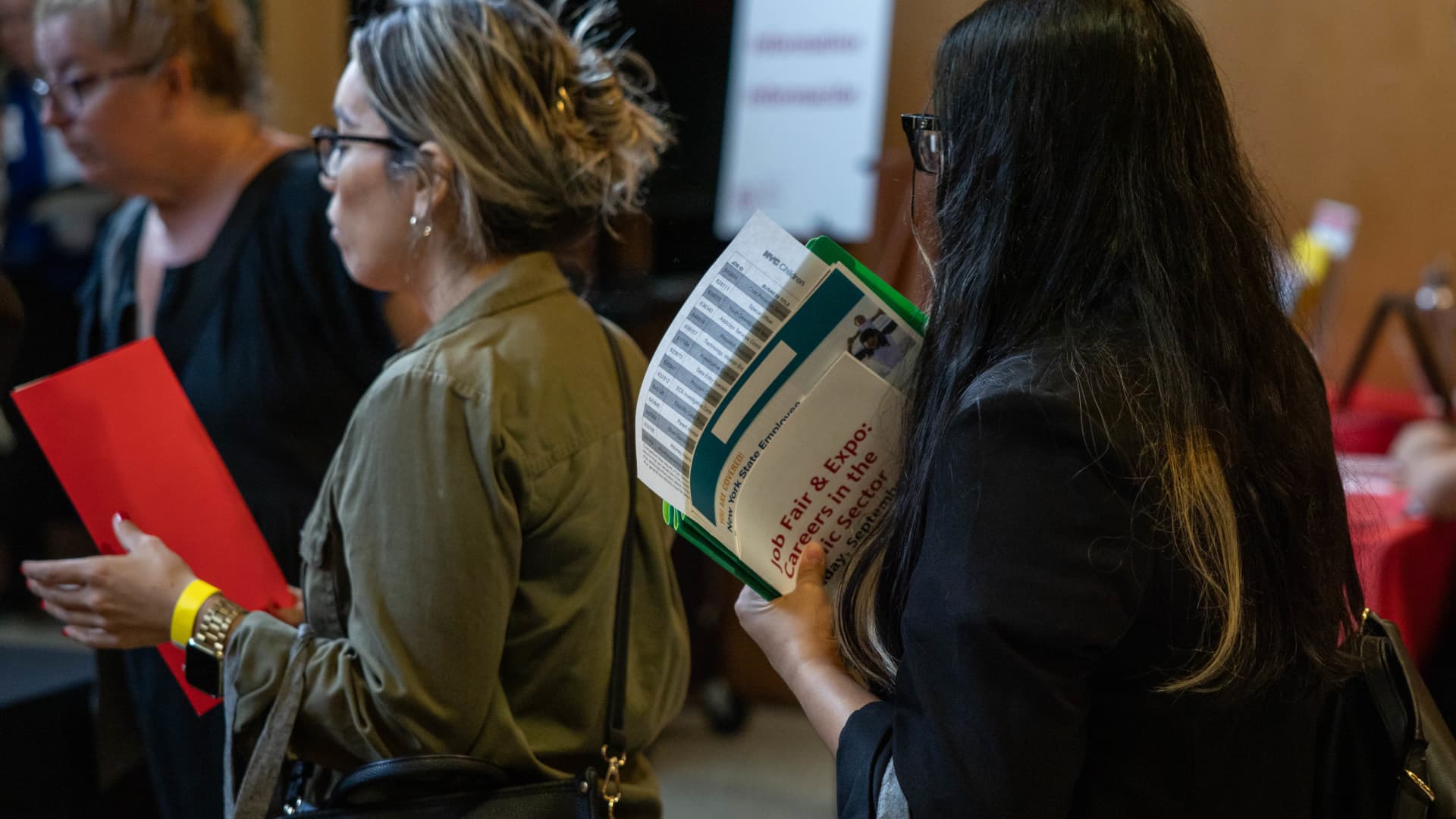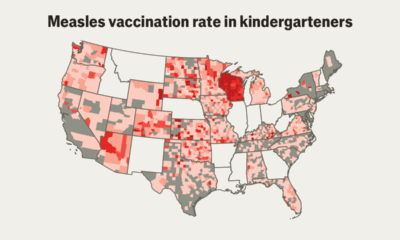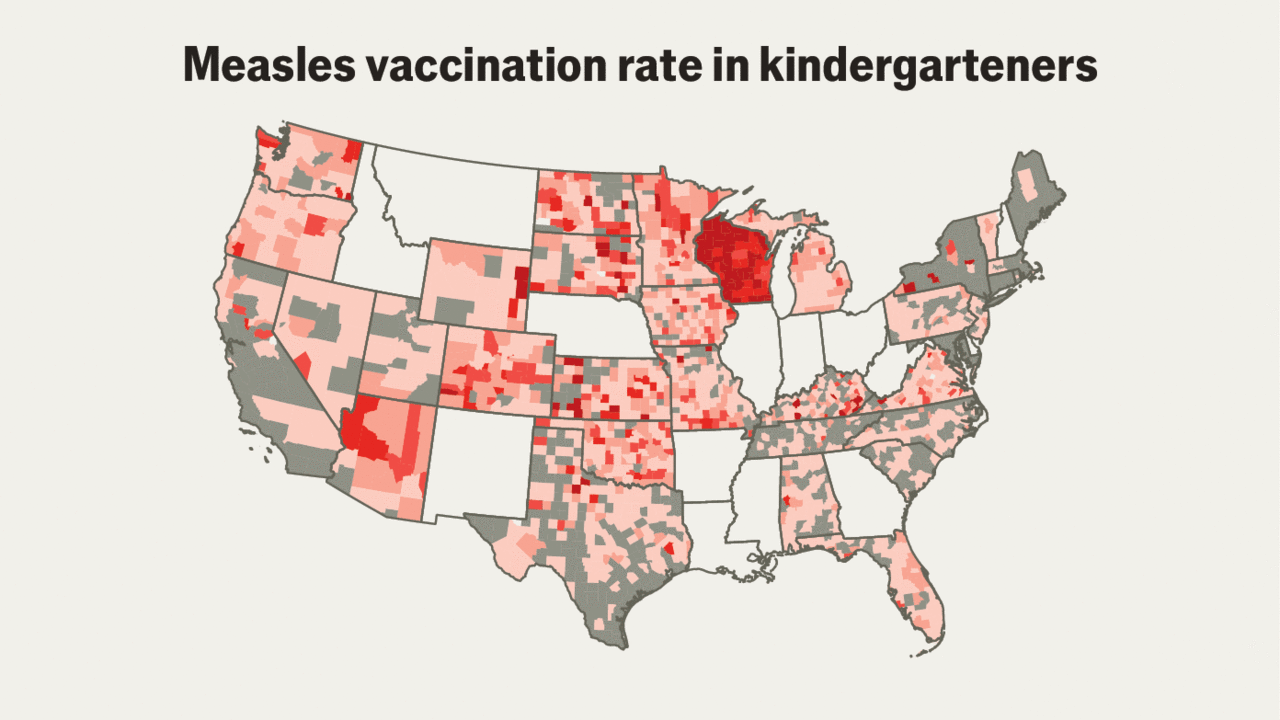A jobseeker holds flyers during the New York Public Library’s annual Bronx Job Fair & Expo at the the Bronx Library Center in the Bronx borough of New York, US, on Friday, Sept. 6, 2024.
Yuki Iwamura | Bloomberg | Getty Images
The unemployment rate for white Americans inched higher in October, according to data released Friday by the Department of Labor.
In October, white Americans saw their jobless rate rise to 3.8% from 3.6% in the month prior. This trend bucked the overall unemployment rate for the country, which held steady at 4.1% in October from September, as well as for the other demographic groups.
The jobless rates for Black and Hispanic workers were unchanged last month at 5.7% and 5.1%, respectively. Asian Americans saw their unemployment rate creep lower to 3.9% from 4.1%.
On the other hand, the jobless rates for both white men and women edged higher in October. For the men, it increased to 3.5% from 3.4%. For women, it rose to 3.3% from 3.1%.
While Hispanic women saw their jobless rate climb to 5.2% from 4.8%, unemployment rates for their male counterparts slid to 4.0% from 4.1%. The unemployment rate also ticked lower for Black women to 4.9% from 5.3%, while it climbed to 5.7% from 5.1% for Black men.
To Heidi Shierholz, president of the Economic Policy Institute, this jump indicates the distortion and volatility in month-to-month data, especially considering that the jobless rate for Black men dropped to 5.1% in September from 5.9% in August.
“I think that the big increase that we saw in Black male unemployment in October was really just renormalizing after the big, unusual drop in September,” she told CNBC.
Shierholz added that October’s unemployment numbers were also unusually affected by the hurricanes and labor strikes, making it even more difficult to compare these data points.
“You never want to focus on one month’s data, and that is more true than ever right now because this month’s data was so distorted by these unusual temporary factors,” she said.
In October, the overall labor force participation rate — the percentage of the population either employed or actively seeking work — ticked down to 62.6% in October from 62.7% in September.
Among white workers, the labor force participation rate also inched lower to 62.2% in October from 62.4% in the prior month, while it declined to 66.9% from 67.4% for Hispanic workers. Within Asian workers, the participation advanced to 65.5% in October from 65.3% in September, while it held steady for Black Americans at 62.9%.
— CNBC’s Gabriel Cortes contributed to this report.

 Economics1 week ago
Economics1 week ago
 Economics1 week ago
Economics1 week ago
 Economics1 week ago
Economics1 week ago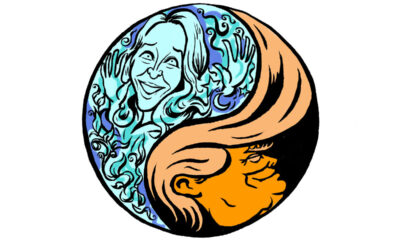
 Economics1 week ago
Economics1 week ago
 Blog Post1 week ago
Blog Post1 week ago
 Economics1 week ago
Economics1 week ago
 Economics6 days ago
Economics6 days ago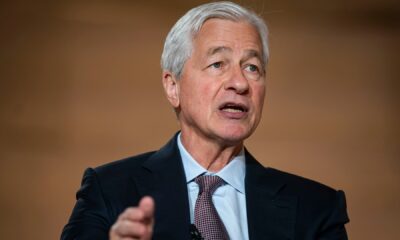
 Economics1 week ago
Economics1 week ago
